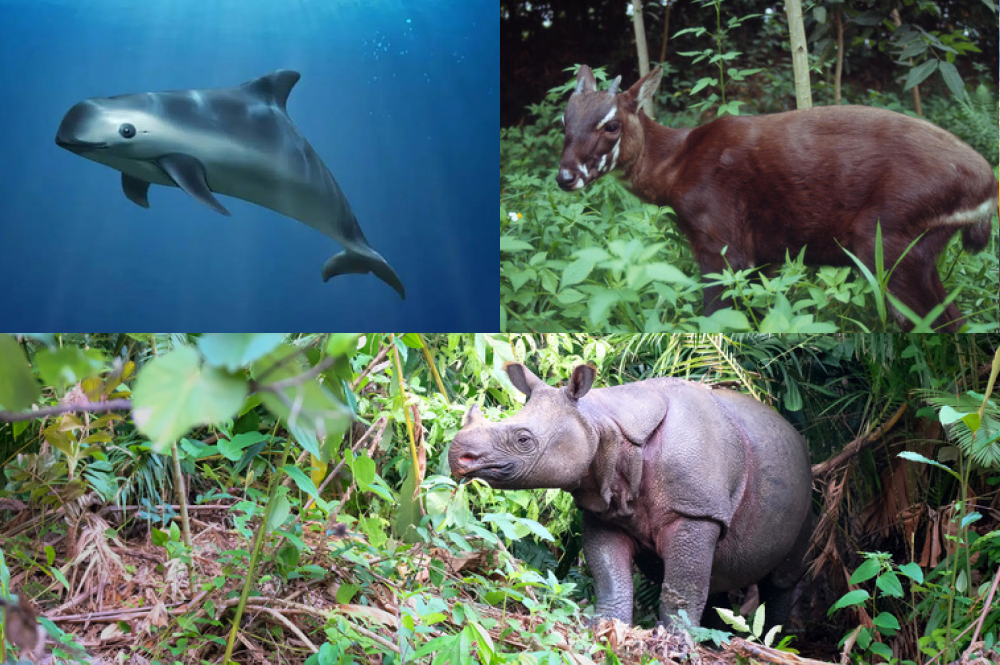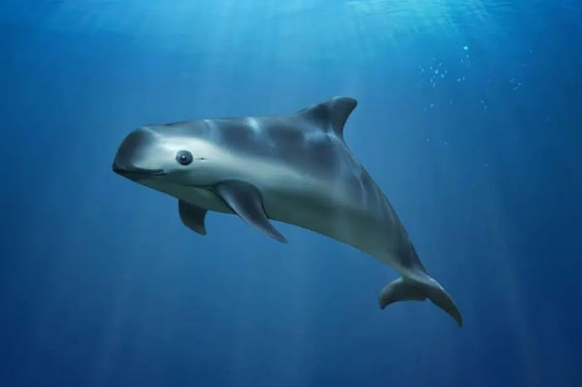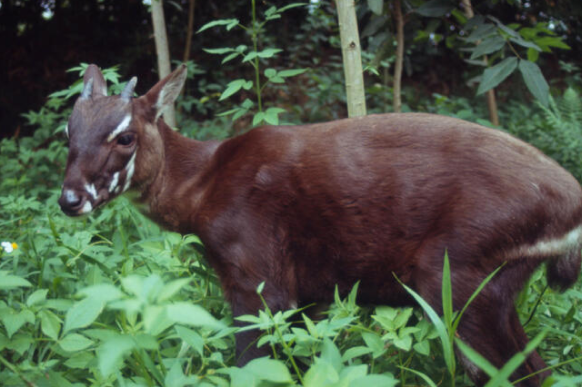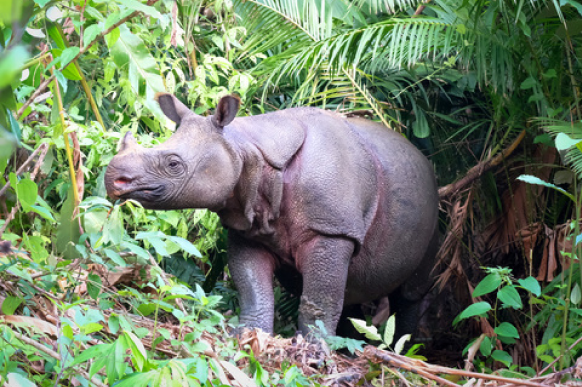Three Animals That Are Under Threat Because Of Climate Change

Whilst we are all aware of the adverse impact climate change is having on humans, animals and habitats; it can often be forgotten that our future generations may miss out on witnessing some of the world’s most beautiful creatures, due to going extinct from the activities of today. We previously discussed how polar bears are not as endangered as other animal species, and today shed some light on those species that are on the brink of extinction.
Vaquita

Image source: Earth.org
It can be difficult to accurately visualise the amount of a species left in the world, for example 6,000 of one species may sound like a fair few. However, it’s easy to picture 10 people in a room, and that’s exactly how many Vaquita there are left in the world. With just ten individuals populating the globe, Vaquita are one of the critically endangered animals that are unfortunately unlikely to escape extinction without immediate intervention.
This small porpoise is the rarest marine animal and was only discovered in 1958. Vaquita’s dorsal surface is grey in colour, with a white underside featuring light grey markings, and at only five feet long, these small cetaceans are dangerously at risk. Living in the warm waters of the Gulf of California, they often find themselves entangled and drowned in gillnets used for illegal fishing and are at major risk of being gone forever.
However, there are measures being established to protect the species, including a Vaquita Refuge to protect the core area of their habitat. In addition to a plan being created by the local government to compensate fishermen who rely on the area to make a living.
More can be done – one of the easiest solutions to ensuring a future for Vaquita is through a stronger, enforced ban of gillnets throughout their habitat, and an improvement in safe fishing technologies to substitute these harmful nets.
Impact on the Habitat
Vaquita play an important role in the food web, feeding on fish, squid and crustaceans, in turn regulating the populations of prey species. Additionally, Vaquita are a food source for predators such as sharks, meaning a loss of them in the wild could disrupt the ecosystem.
Saola

Image Source: WWF
Another species that you may never have heard of is the Saola. Saola are large forest dwelling mammals with eye-catching markings and unique horns, they look similar to an antelope but are actually part of the cow family.
Only discovered in 1992, Saola are found in the Annamite Mountains in Laos and Vietnam, and due to their shy nature and vulnerability, their population is unknown.
They are famous for their straight horns that can grow up to 20 inches long, which are found in both females and males, and their striking markings that make them charming and unique. However, their extraordinary appearance makes them a target for poaching, with snares using Saola as trap animals to trap other species that supply meat and medicine. With a rise in demand for meat from wealthier populations, and a shortage of traditional medicine, Saola is being captured at an unsustainable rate.
Impact on the Habitat
Although there are so few Saola left in the wild, their impact on vegetation is minimal. However, they do act as prey to larger carnivorous mammals, thus being an integral part of the food chain.
Javan Rhino

Image source: International Fund for Animal Welfare
Surprising to many, there are five species of rhinoceros, with the Javan rhino being one of the most threatened species. With only 76 in the world, they are critically endangered, with all 76 living in Ujung Kulon National Park in Java, Indonesia, with the last one in the Vietnam wild being poached in 2010.
Grey in colour and with just one large horn, these rhinos can reach up to 5,000 pounds in weight, but with a maximum height of 5.8 feet, these rhinos are some of the smallest rhinos in the world.
Previously, the Javan rhino would have lived in the wild in northeast India and the Sundarbans, throughout mainland Southeast Asia, and on the island of Sumatra, up until the early 20th century. However, they were frequently killed by trophy hunters for their horns and for use as medicine.
The Ujung Kulon National Park is the last hope for this small but mighty species; however, their biggest threats are habitat loss, natural disasters such as tsunamis which are common in the area, and poaching, which still continues to be a threat even in the protected area. Additionally, due to its small size, and low genetic diversity, it is difficult for the species to survive long-term.
Impact on the Habitat
Javan rhinos graze vegetation – up to 50kg per day – playing a vital role in ensuring the forest remains healthy. Additionally, they use their horns to scrape mud from the forest floor, making room for new plant growth. These activities are essential for improving and spreading biodiversity, which also helps carbon sequestration.
Outlook
Animals, small and large, all play a vital role in balancing the biodiversity and ecosystems of their habitats, and with a reduction in thousands of animal species across the globe, it presents a substantial issue for both the current and future generations. Although work is being carried out by both the WWF and charities around the globe, a bigger effort needs to be made to ensure that we don’t lose any more species than we already have.


